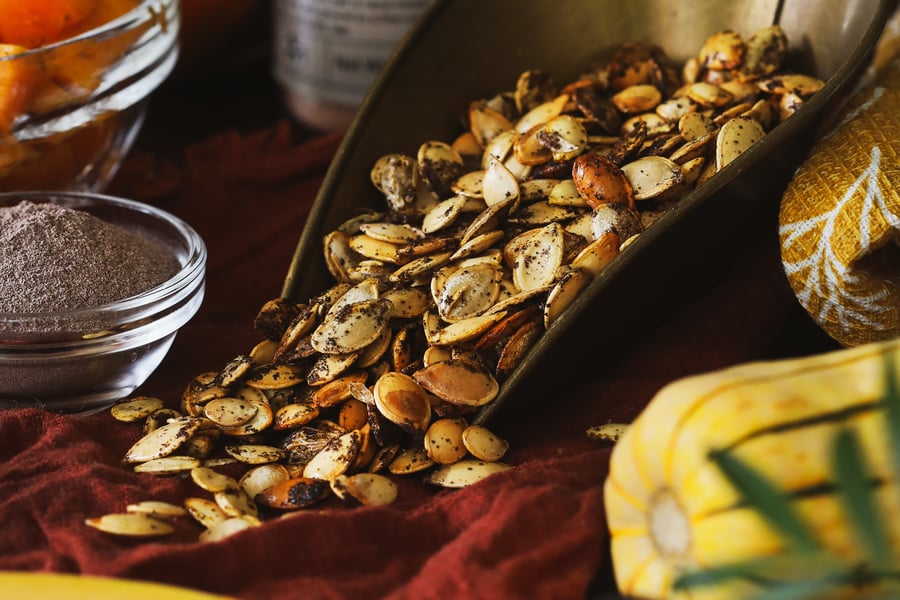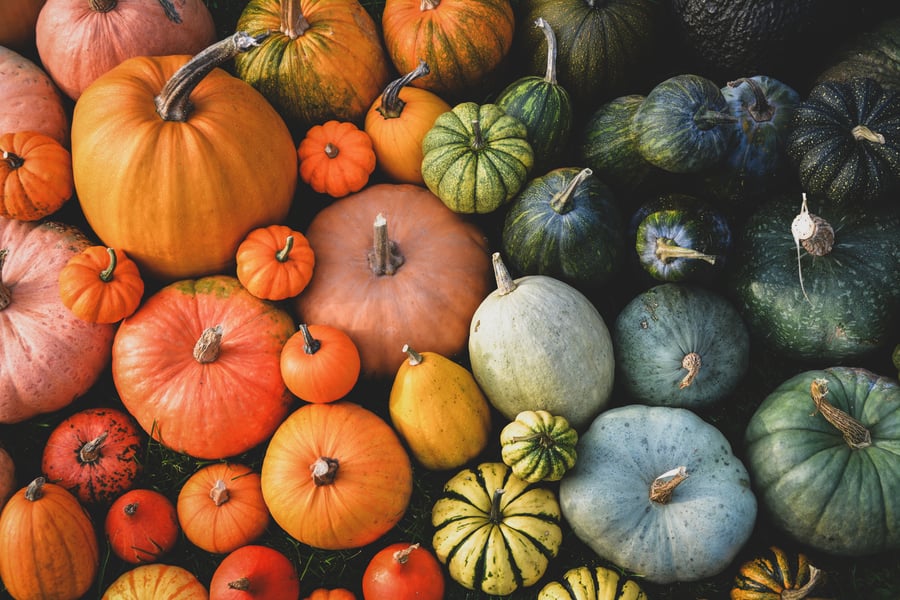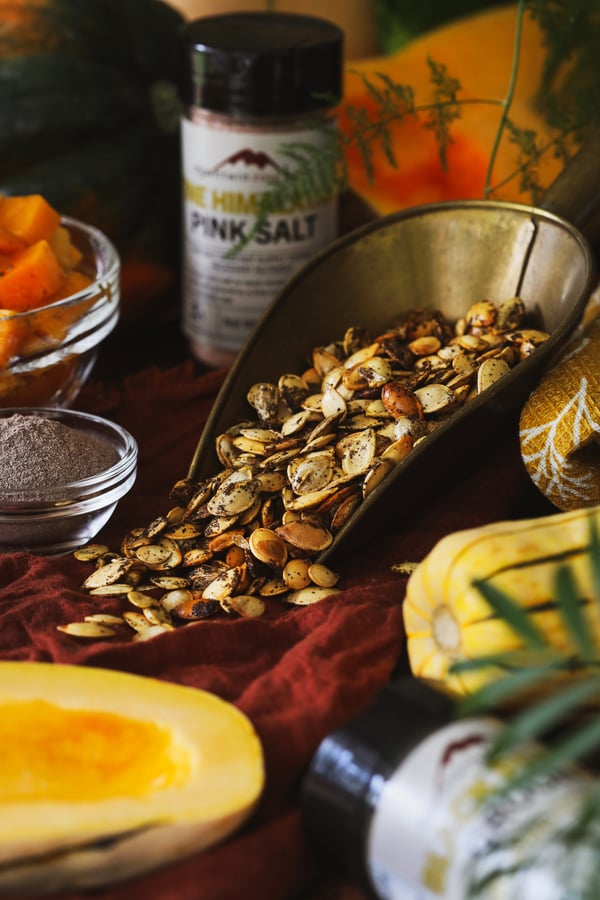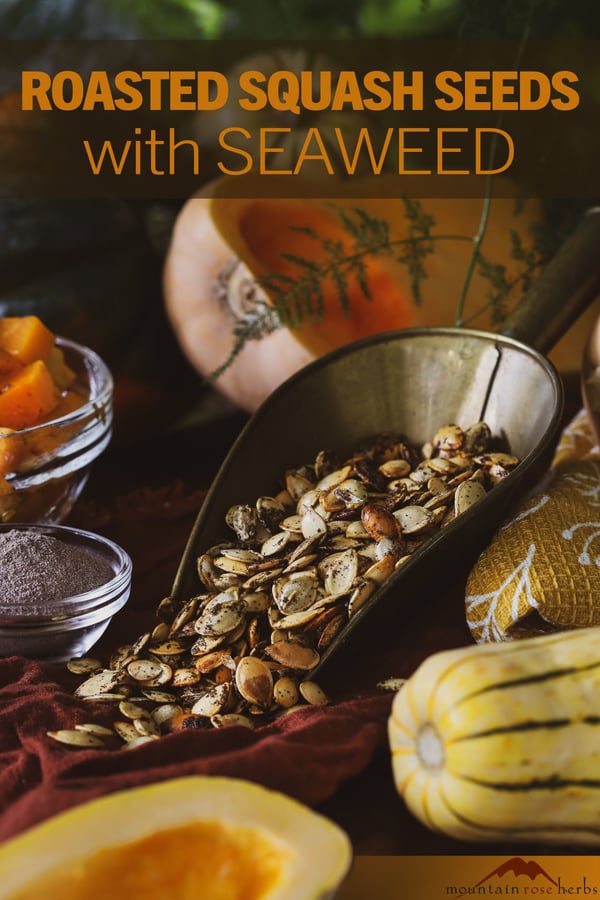If I had a quarter for every time I’ve found myself guiltily staring down at the seed-speckled mushy remnants of a squash I freshly gutted, I’d be retired and roaming somewhere around the Oregon Coast by now. “What in the world am I supposed to do with all these seeds?,” I’d grumble to myself as the seeds seemingly stared back up at me with a desperate look of maybe, just maybe, this will be the day I use them to their full potential. Repurposing seeds that would otherwise be destined for the compost bin can feel intimidating, time-consuming, and messy (full disclosure – the messy part is true!).
As squash season is upon us, I’ve decided it’s time to take charge of repurposing all the seeds I'll soon be accumulating from testing out numerous fall squash recipes. To begin my journey into the depths of squash guts, I first dove into learning the importance of using organic squash for culinary creations.
Conventionally grown squash is no stranger to chemical fertilizers and pesticides. Pumpkin plants in particular (which is a variety of squash in the Cucurbitaceae family) are used by some farmers to efficiently absorb soil contamination through their root systems in a process known as phytoremediation. To put it simply, think of the squash plant as one of nature’s leading ShamWow towels. As squash plants absorb just about everything within the soil they’re grown in, choosing organic squash is key to preventing unnecessary exposure to chemicals such as clomazone, ethalfluralin, and malathion, to name a few. Not only has it been shown that these chemicals can be harmful to human health, but they’re also damaging to our environment by contaminating groundwater, creating air pollution, and causing native insect populations to plummet.
Now, I don’t mention these scary chemicals to deter you from cooking up the endless possibilities that squash provides (although it is “spooky season”). Rather, I share this knowledge to encourage us all to make conscious decisions about the foods in which we choose to nourish ourselves. With that being said, the education we offer on why choosing organic matters cannot be absent of acknowledging that organic produce is not always an accessible or affordable option in every community. If you find yourself having trouble obtaining organic squash, ensuring the squash you ingest was grown for culinary purposes rather than for carving and decoration is a good stepping stone in avoiding unwanted chemicals in your diet. Squash grown for non-culinary purposes are subject to a much higher usage of pesticides and chemical fertilizers and should not be used for cooking or baking.
While developing this simplistic recipe, I knew I wanted to highlight the nutritional value of the seeds while also playing around with adding other nutrient-dense ingredients to make these seeds have tiny but mighty nutritious snacking power! After pondering the endless options in front of me, the addition of seaweed stood out among the rest. Naturally high in iodine and other minerals, including magnesium, iron, and calcium, seaweed had just what I was looking for to balance the nutty flavor of squash seeds and offer an added health boost.
In this recipe, I used dulse powder, which is a red seaweed harvested in the cool waters along the Atlantic coast of North America as well as the shores of Ireland and Norway. Dulse is known for having a sweet flavor and a mild taste, so it will not overpower your taste buds with the flavor of the sea (which I personally love, but I know some of our readers may be less keen than I). Upon tasting these uniquely delicious seeds for the first time, I felt transported to a rainy fall evening on the Oregon Coast; no retirement or quarters received from guilty stares at unused squash seeds required!
Roasted Squash Seeds with Dulse Powder Recipe
Makes approximately 2 cups.
Ingredients
- 2 cups organic squash seeds (see pro-tips for squash varieties that are most successful for this recipe)
- 2 Tbsp. organic cooking oil of choice (I used extra virgin olive oil)
- 1/2 tsp. organic dulse powder
- 1/4 tsp. organic black pepper
- 1 small pinch sea salt
Directions
- Preheat oven to 350° F.
- Lightly grease a sheet pan or line it with a silicone baking mat or parchment paper. Set aside.
- Scoop seeds out of squash and place in a colander or mesh strainer. Set squash aside for a separate use.
- Rinse seeds thoroughly with cold water to remove fiber and pulp. If small bits of squash remain, that is okay!
- Place rinsed seeds on a tea towel or paper towel and gently pat dry.
- Once seeds are dry, transfer to a mixing bowl.
- Add oil, dulse powder, salt, and pepper. Toss with seeds until evenly coated.
- Spread seed mixture evenly on the prepared sheet pan.
- Roast smaller seeds about 6-7 minutes and larger seeds approximately 15-18 minutes, stirring halfway. You’ll know seeds are ready when they have an even, slightly golden color, and your house has begun to smell reminiscent of buttery popcorn!
- Enjoy your delicious roasted seeds and the feeling of accomplishment that you’ve successfully repurposed seeds that would otherwise be destined for the compost bin!
- Store cooled seeds in an airtight container at room temperature and consume within a month. (although, these irresistibly delicious seeds will likely disappear before you know it!).
Pro Tips
- After testing numerous squash varieties for this recipe, my favorites were delicata, butternut, acorn, and kobocha squash varieties. My general recommendation is the thinner and smaller the seeds, the better!
- Certain squash varieties tend to produce more seeds than others. Using a measuring cup to gauge your seed quantity is key to success with this recipe.
- As seaweed is naturally high in various minerals that create its signature salty flavor, begin with just a small pinch of sea salt. You can always add an extra pinch after roasting if desired!
Looking for Fun Squash Recipes?
Check Out This Zesty Squash Taco Bowl Recipe
You May Also Enjoy
- Smoky Southwestern-Inspired Vegan Spaghetti Squash Bowls
- Butternut Squash Galette
- How to Upcycle Herbs After Making Herbal Vinegars, Oils, & More














